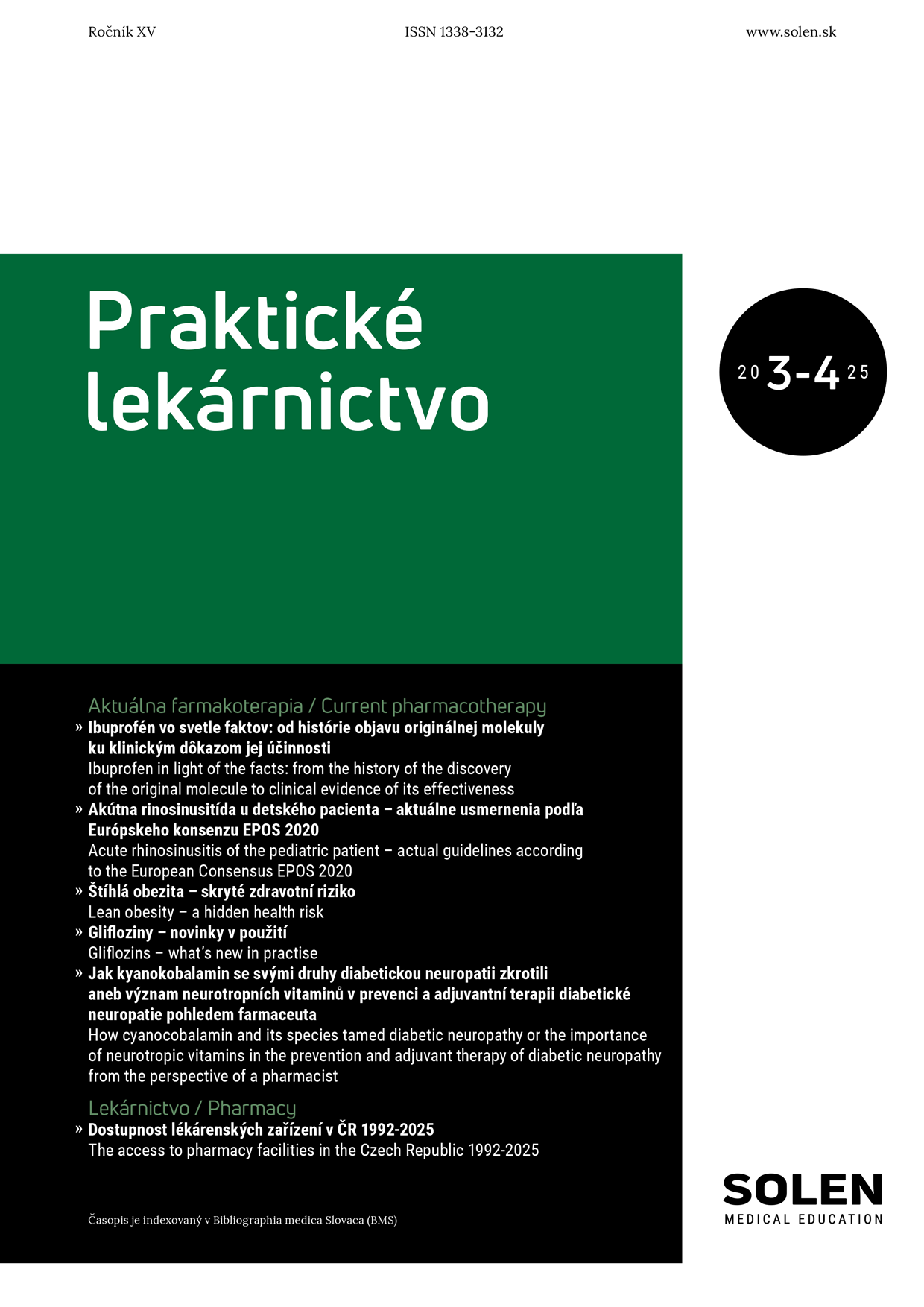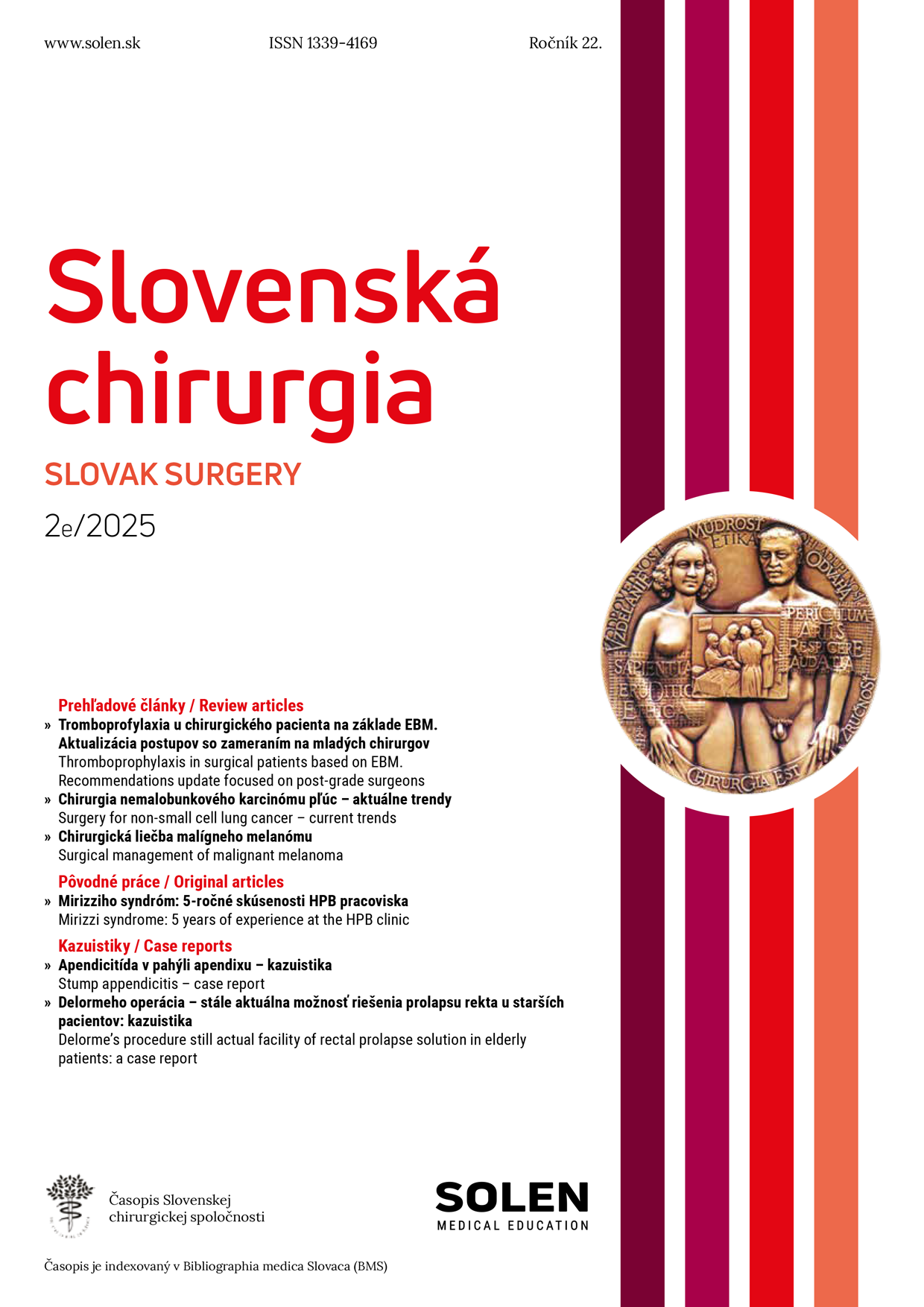Pediatria pre prax 6/2020
Menej častá príčina respiračného stridoru u novorodenca
MUDr. Tomáš Jurko, PhD., doc. MUDr. Alexander Jurko Jr., PhD., MUDr. Peter Olejník, PhD., prof. MUDr. Mirko Zibolen, CSc.
Respiračný stridor predstavuje závažný klinický problém u novorodencov. Najčastejšími príčinami respiračného stridoru v novorodeneckom období sú tracheomalácia, laryngomalácia a anomálie aortálneho oblúka (cievne prstence). Cievny prstenec vzniká dôsledkom poruchy embryonálneho vývoja aorty a jej segmentov. Klinický obraz pacienta s cievnym prstencom závisí od stupňa kompresie dýchacích ciest a pažeráka. Cievne prstence sú v mnohých prípadoch asymptomatické, najčastejšími príznakmi sú respiračný stridor, dyspnoické dýchanie a vracanie. Autori príspevku opisujú kazuistiku ľahko nezrelého novorodenca, ktorý mal od narodenia závažné respiračné ťažkosti, ktoré vyžadovali dlhšie trvajúcu umelú pľúcnu ventiláciu. Pomocou viacerých zobrazovacích vyšetrení (CT angiografia, tracheobronchoskopia) sa zistilo, že nepriaznivý klinický stav novorodenca spôsobila dextropozícia srdca s následnou kompresiou priedušnice dislokovanými vetvami aortálneho oblúka. Po vykonaní aortopexie v Detskom kardiocentre v Bratislave sa zdravotný stav pacienta postupne upravil.
Kľúčové slová: respiračný stridor, cievny prstenec, echokardiografia
Less common cause of respiratory stridor in newborn
Respiratory stridor is a serious clinical problem in newborns. The most common causes of respiratory stridor in the neonatal period are tracheomalacia, laryngomalacia, and anomalies of the aortic arch (vascular rings). The vascular ring is the result of a disorder in the embryonic development of the aorta and its segments. The clinical picture of a patient with a vascular ring depends on the degree of compression of the airways and esophagus. The vascular rings are in many cases aymptomatic, the most common symptoms are respiratory stridor, dyspnoic breathing and vomiting. The authors describe a case report of an immature neonate who had severe respiratory difficulties from birth requiring prolonged artificial lung ventilation. Using several imaging examinations (CT angiography, tracheobronchoscopy), it was found that the unfavorable clinical condition of the newborn was caused by dextroposition of the heart with subsequent compression of the trachea by the dislocated branches of the aortic arch. After performing aortopexy at the pediatric cardiocenter, the patient’s health gradually improved.
Keywords: respiratory stridor, vascular ring, echocardiography

















